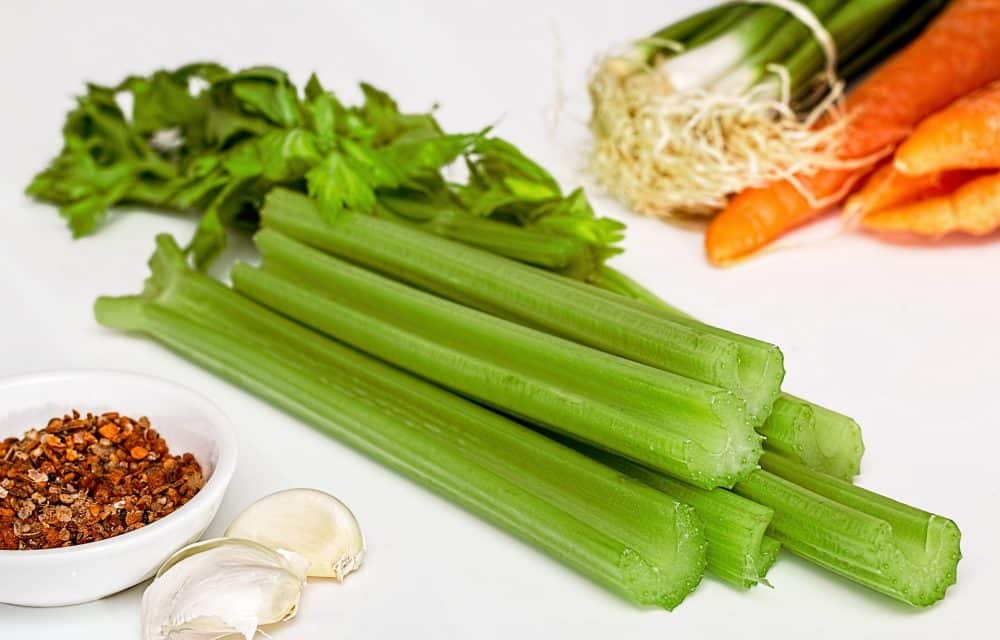What’s Your Motivation To Stay Healthy?
 If you’re like many people, simply deciding you’re going to workout because someone said it was good for you isn’t going to help you stick with a fitness program. Somehow, eating a nutritious meal because it’s good for you, sounds like something mothers tell their children and if you are like most people, it didn’t make you want to eat Brussels sprouts. Having a motivation to stay healthy or get healthy can be your focus, spurring you on when you’d rather grab an order of fries than a salad or watch the latest Netflix release.
If you’re like many people, simply deciding you’re going to workout because someone said it was good for you isn’t going to help you stick with a fitness program. Somehow, eating a nutritious meal because it’s good for you, sounds like something mothers tell their children and if you are like most people, it didn’t make you want to eat Brussels sprouts. Having a motivation to stay healthy or get healthy can be your focus, spurring you on when you’d rather grab an order of fries than a salad or watch the latest Netflix release.
Changing daily habits takes a while.
If you’ve ever started a program of healthy eating and regular exercise, only to have it end in less than a month, you understand that it’s not always easy to stick with healthy options until they become habits. That’s one reason working out at the same time every day is important. It helps you form a habit, which makes sticking with an exercise program easier. It’s also a good reason to do meal prep, so you don’t have to worry about what’s for supper or are forced to cook when you’re simply exhausted. Even if you’re really motivated, taking steps to prevent failure can help.
Identifying your downfalls and limitations can help with your motivation.
A food diary can help you realize how many extra calories you eat without realizing it. It can improve your motivation. Tracking your fitness goals, including the number of sets and repetitions can help you realize how much progress you’ve made, even if you don’t see the results yet. Keep your goals in front of you and also your motivation. Do you want to be healthy? Why? That’s not a silly question. Staying healthy can mean you’ll see your child graduate and marry or allow you to live independently in old age. That’s really motivating.
Finding what drives you doesn’t have to be shared.
Nobody should judge your reasons for starting a fitness program. However, they should be yours and you shouldn’t do it just because a spouse said you need to lose weight or get healthier. You need to want it. They say the best revenge is success, so maybe you want to look your best and feel your best as revenge for a bad break-up. It’s far better than sitting home crying or harassing the other party. It also helps get rid of stress. Maybe having more fun time with kids or grand-kids is your goal. You also may just want to feel good about yourself, which you should do no matter what your physical shape, but by getting healthier, you’ll be showing you think you’re important.
- Focusing on living healthier means more than just working out regularly or eating healthier. It includes healthy habits like getting enough sleep, hydrating frequently and learning to deal with stress.
- When you’re super motivated, you’ll find ways to increase the activity in your life. It might be something as simple as doing some exercises during a television commercial or even taking the stairs rather than the elevator.
- If you love food, use that love to help you lose weight. Learn new recipes that are healthy and share that food with others. You’ll probably find people want to join you on your journey to fitness.
- Use your motivation to get fitter to enrich your life. Do you want more energy to play with the kids? Don’t wait, do it now to burn calories. Do more things that are physical, which can include deep cleaning your home that you might otherwise be put off for later. You’ll get a double benefit.
For more information, contact us today at Body Sculptors Personal Training



 If you’re living in Louisville, KY, or other area where it can get really cold, you may wonder whether it’s healthy to run in the cold. In most cases, the answer is yes, depending on how you dress and how extreme the cold weather is. However, cold weather may make your heart work harder. It causes your blood vessels to constrict so there’s more blood going to vital organs like your brain. It causes an increased risk for blood clots that can lead to heart attack or stroke.
If you’re living in Louisville, KY, or other area where it can get really cold, you may wonder whether it’s healthy to run in the cold. In most cases, the answer is yes, depending on how you dress and how extreme the cold weather is. However, cold weather may make your heart work harder. It causes your blood vessels to constrict so there’s more blood going to vital organs like your brain. It causes an increased risk for blood clots that can lead to heart attack or stroke.
 We all know that eating a tub of ice cream isn’t good for you, but would it be better if you ate a tub of frozen yogurt. Since it first hit the market, it’s been a huge hit. After all, yogurt is a healthy option, but, is it? Frozen yogurt still has sugar and flavoring added. If you go to a fancy frozen yogurt shop, you can add tons of toppings that would make a candy manufacturer blush. That can’t possibly be healthy. The answer is that it isn’t.
We all know that eating a tub of ice cream isn’t good for you, but would it be better if you ate a tub of frozen yogurt. Since it first hit the market, it’s been a huge hit. After all, yogurt is a healthy option, but, is it? Frozen yogurt still has sugar and flavoring added. If you go to a fancy frozen yogurt shop, you can add tons of toppings that would make a candy manufacturer blush. That can’t possibly be healthy. The answer is that it isn’t.
 When you think of the benefits of celery, you immediately think of it as a low calorie food that’s good for dieters. Celery is a member of the parsley family. In fact, it’s name came from the Italian word, seleri and the French word, celeri that’s derived from the Greek word selinon that means parsley. It was first used for medicinal purposes in ancient times, often for treating problems with nervousness, hysteria and insomnia. It wasn’t used for food until the early 1600s by the French.
When you think of the benefits of celery, you immediately think of it as a low calorie food that’s good for dieters. Celery is a member of the parsley family. In fact, it’s name came from the Italian word, seleri and the French word, celeri that’s derived from the Greek word selinon that means parsley. It was first used for medicinal purposes in ancient times, often for treating problems with nervousness, hysteria and insomnia. It wasn’t used for food until the early 1600s by the French.
 At Body Sculptors in Louisville, KY, helping people look and feel better is our major goal. We strive to help you find ways to get better results in less time by using scientifically based workouts and healthy eating habits. One question that often is asked is whether it makes a difference what or when you eat when you workout. The answer is a resounding yes. After a workout, you need to replenish your body and one thing that helps is the consumption of bananas.
At Body Sculptors in Louisville, KY, helping people look and feel better is our major goal. We strive to help you find ways to get better results in less time by using scientifically based workouts and healthy eating habits. One question that often is asked is whether it makes a difference what or when you eat when you workout. The answer is a resounding yes. After a workout, you need to replenish your body and one thing that helps is the consumption of bananas.
 We’re here at Body Sculptors in Louisville, KY, to help you achieve your goals. Many people want to lose weight, almost everyone wants to feel and look their best, but did you know that regular exercise and a healthy diet can boost your energy and focus, too. When it comes to nutrition, the herbs and spices you add can also make a difference. Both herbs and spices do more than just add amazing flavor, they add nutritional benefits with little or no additional calories. That’s a win-win situation.
We’re here at Body Sculptors in Louisville, KY, to help you achieve your goals. Many people want to lose weight, almost everyone wants to feel and look their best, but did you know that regular exercise and a healthy diet can boost your energy and focus, too. When it comes to nutrition, the herbs and spices you add can also make a difference. Both herbs and spices do more than just add amazing flavor, they add nutritional benefits with little or no additional calories. That’s a win-win situation.
 Did you want to start eating healthy this year, but you’re not sure where to start? We can help you. While some people love to dive right into a project and make all the changes at once, others like to dip their feet in the water and change a little at a time. We work with all types of people and understand that. For those that love doing everything at once, just check out our healthy menus on our Fit Meal Formula plan. If you want to start with tiny steps, here’s how you start.
Did you want to start eating healthy this year, but you’re not sure where to start? We can help you. While some people love to dive right into a project and make all the changes at once, others like to dip their feet in the water and change a little at a time. We work with all types of people and understand that. For those that love doing everything at once, just check out our healthy menus on our Fit Meal Formula plan. If you want to start with tiny steps, here’s how you start.
 Getting a good night’s sleep is extremely important. Not only does it help you concentrate better the next day, it can actually help you lose weight or prevent weight gain. A good night’s sleep improves your athletic performance and can improve heart health, too. It’s an important factor in preventing depression, as well. Reducing inflammation and boosting your immune system are highly important for your overall health and a good night’s sleep can do it. What you drink before you retire to the bedroom makes a difference. Here are some drinks to have before bed.
Getting a good night’s sleep is extremely important. Not only does it help you concentrate better the next day, it can actually help you lose weight or prevent weight gain. A good night’s sleep improves your athletic performance and can improve heart health, too. It’s an important factor in preventing depression, as well. Reducing inflammation and boosting your immune system are highly important for your overall health and a good night’s sleep can do it. What you drink before you retire to the bedroom makes a difference. Here are some drinks to have before bed.
 No matter how hard you work your abs, if you have a layer of fat covering them, nobody can see your hard work. While spot exercises create strong underlying muscles, when you lose weight, you lose it all over your body, not just in one spot. So finding the cardio that burns belly fat the best is actually finding one that burns the most calories.
No matter how hard you work your abs, if you have a layer of fat covering them, nobody can see your hard work. While spot exercises create strong underlying muscles, when you lose weight, you lose it all over your body, not just in one spot. So finding the cardio that burns belly fat the best is actually finding one that burns the most calories.